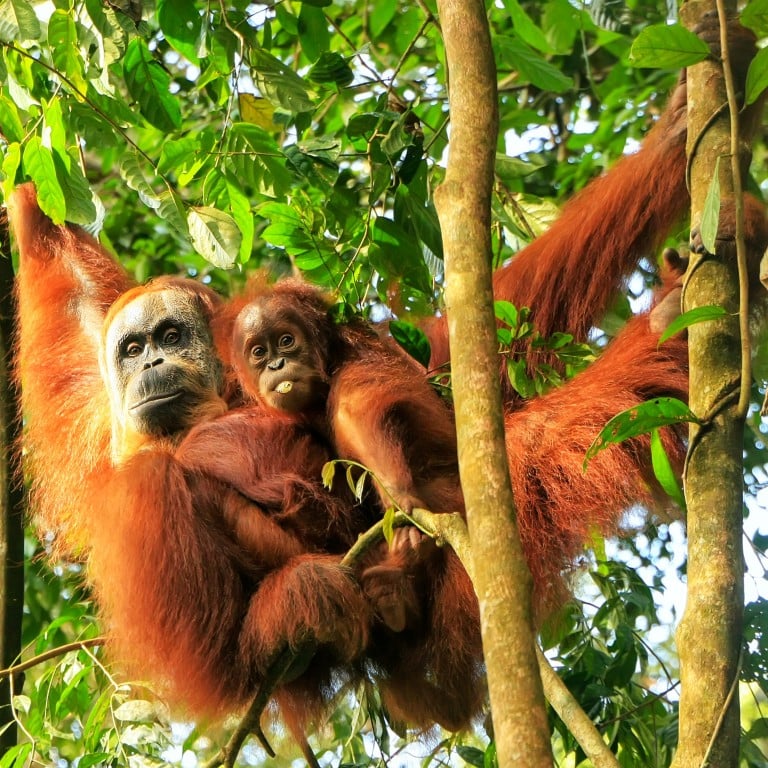
Sumatra, Indonesia; the good and the bad: orangutans, dramatic volcanoes, lakes and fantastic food, but terrible roads, deforestation and tiger attacks
- Sumatra is famous for its wild orangutans and tigers, rainforests, incredible surfing, biodiversity, volcanoes, and the amazing Lake Toba
- However, there are downsides: bad roads, terrible public transport, deforestation caused by illegal logging and palm oil plantations, and natural disasters
Straddling the equator, Sumatra is the sixth largest island in the world – 172 Hong Kongs could fit inside it. A biologically diverse region of awe-inspiring landscapes, its natural beauty seduces botanists and backpackers, birdwatchers and beach lovers.
Volatile volcanoes belch clouds of steam and ash skywards and earthquakes generate shock waves that reverberate for thousands of miles. National parks such as Gunung Leuser are recognised for their abundant and varied wildlife – the Unesco biosphere reserve is the only place left on Earth where tigers, elephants, rhinos and orangutans live alongside one another in the wild.
This Indonesian Eden is culturally diverse, too. Ancient ethnic groups, each with unique practices, languages and beliefs, rub shoulders with backpackers and bleach-haired surfers in board shorts.
No trip to Sumatra is complete without an orangutan encounter. The rehabilitation centre and feeding station in the village of Bukit Lawang have both closed, but guided jungle treks provide an opportunity to see our orange-furred relations in their natural environment.
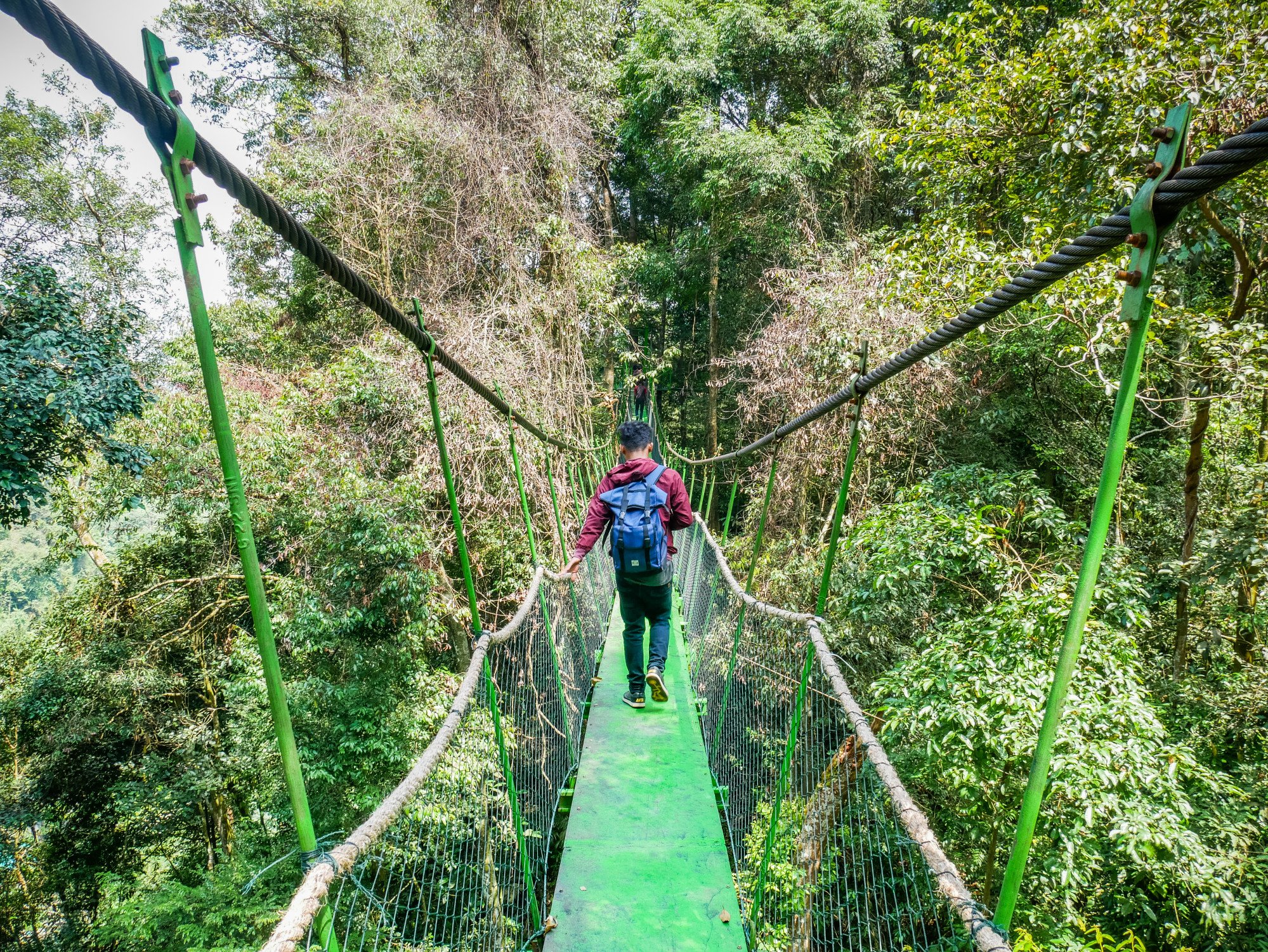

Sumatran tigers are harder to spot. Try your luck in the Kerinci Seblat National Park, which is home to a third of the 400 to 500 remaining in the wild.
Sightings of the elusive cats are rare, so sign up with an organised jungle trekking company to increase your chances. If you draw a blank, there’s still a good chance of encountering gibbons, hornbills and sun bears.
Another Sumatran must-see is Lake Toba. “Discovered” by hippies in the 1960s and ’70s, today’s globetrotters arrive at the world’s largest crater lake intending to stop for a day or two, but often end up hanging out for weeks.
‘10 new Balis’ is now 5 – here’s where they are and why you should visit
Enticed by the hypnotic blue waters, they rent kayaks and paddle over to Samosir, the world’s largest island within an island. Some make a beeline for the Batak Museum, which showcases the history and culture of a lakeside ethnic group who arrived at least 1,000 years before the first tie-dyed travellers appeared on the scene.
Known as Fort de Kock during Dutch colonial rule, Bukittinggi is 900 metres above sea level and the air is cool enough for a brisk walk. Take a souvenir selfie at Jam Gadang, the Dutch-built clock tower that was given to the city as a gift, then head to the market.
After haggling for handicrafts (songket fabric woven by members of the Minangkabau ethnic group is a popular purchase), lace up your hiking boots and head to sublimely scenic Ngarai Sianok, also known as the Grand Canyon of Indonesia, where several spectacular trails await.
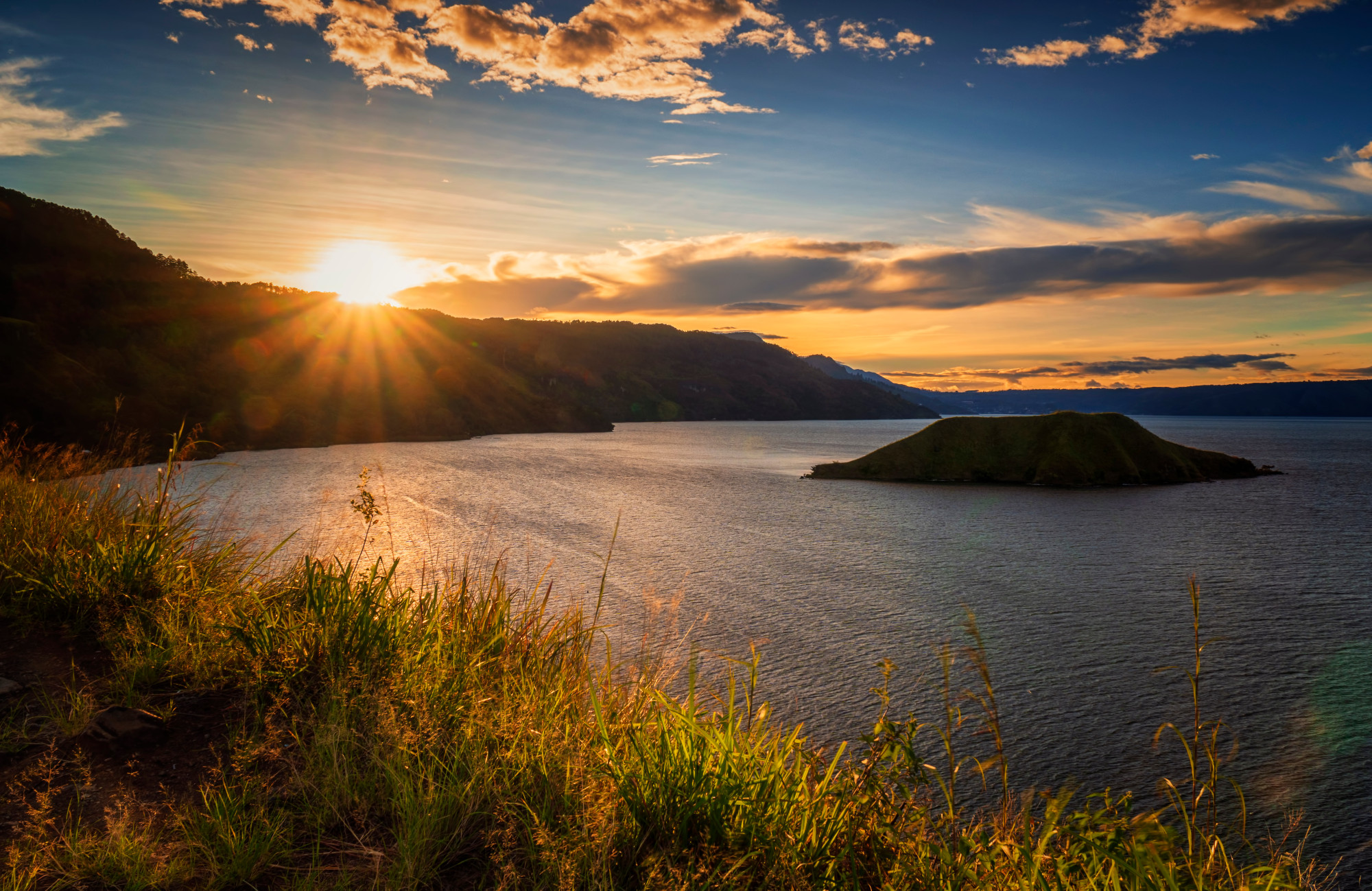
Another photogenic spectacle that mustn’t be missed takes place only an hour and a half’s drive from Bukittinggi, in Tanah Datar.
The thrilling sport of bull racing is rooted in Minangkabau culture and has endured for more than 400 years. The beasts are valued for their strength and agility rather than their speed, but winning bulls can change hands for significant sums.
Photos of the event have won international awards.

Finish your Sumatran sortie with a visit to Siberut. Before boarding the boat in Padang, sample some of the port city’s cuisine, which is regarded as Indonesia’s most delicious.
The dishes, such as beef rendang (braised meat in coconut milk), should be eaten with your fingers.
Next, follow surfboard-clutching foreigners onto a ferry bound for the largest island in the Mentawai group. World-class breaks attract a cosmopolitan crowd and have helped Siberut establish itself as a venue for global surfing contests.

Bad roads, deforestation and natural disasters
Indonesia’s largest undivided island seems even bigger than it is but that’s because roads (and vehicles) are often in poor condition. Public transport can be unreliable and human error causes numerous accidents – fatal bus crashes happen quite frequently.
Travel the route suggested above, from the orangutan forests of Bukit Lawang to the surf beaches of the Mentawai islands, via Lake Toba, Bukittinggi and Siberut, and it’ll take the best part of 30 hours.
One reason travellers end up staying longer than planned at Lake Toba is because the prospect of boarding another cramped minibus fills them with dread. Fly wherever possible.
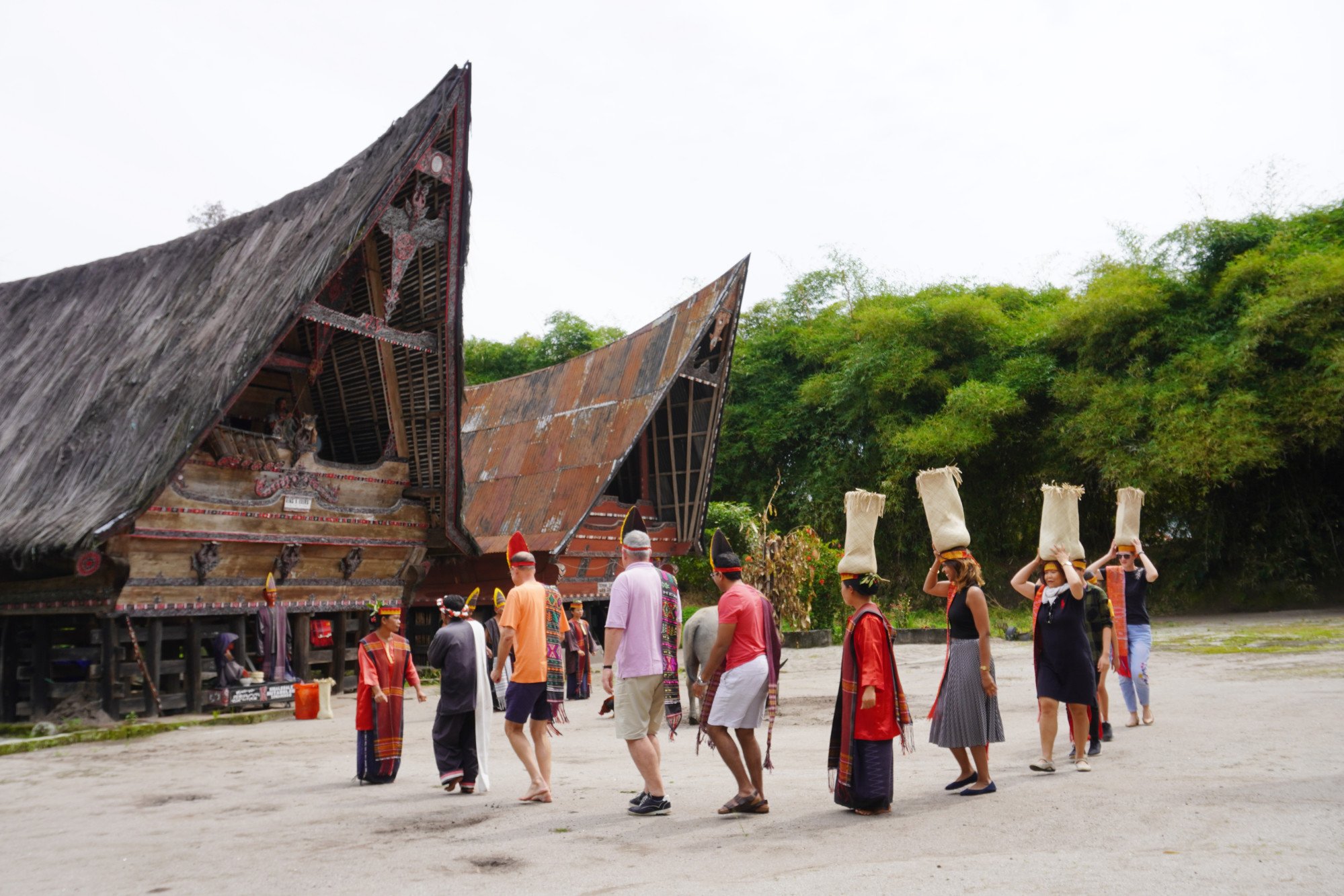
The aforementioned Gunung Leuser National Park is part of the Tropical Rainforest Heritage of Sumatra, which was awarded Unesco World Heritage status in 2004. In 2011, however, it was added to, and remains on, Unesco’s list of World Heritage in Danger.
A number of factors led to the decision, from illegal logging and habitat loss because of agricultural expansion to poaching, including the use of gruesome tiger traps.
Widespread deforestation, often driven by land clearance for palm oil plantations, has also had a devastating impact, contributing to the decline of endangered species. Making matters worse, Sumatra is a centre for illegal wildlife trafficking.
While most tour operators at Bukit Lawang conduct themselves ethically, some guides, anticipating a generous gratuity, will take tourists much too close to the orangutans or produce snacks to lure the animals out of the jungle.
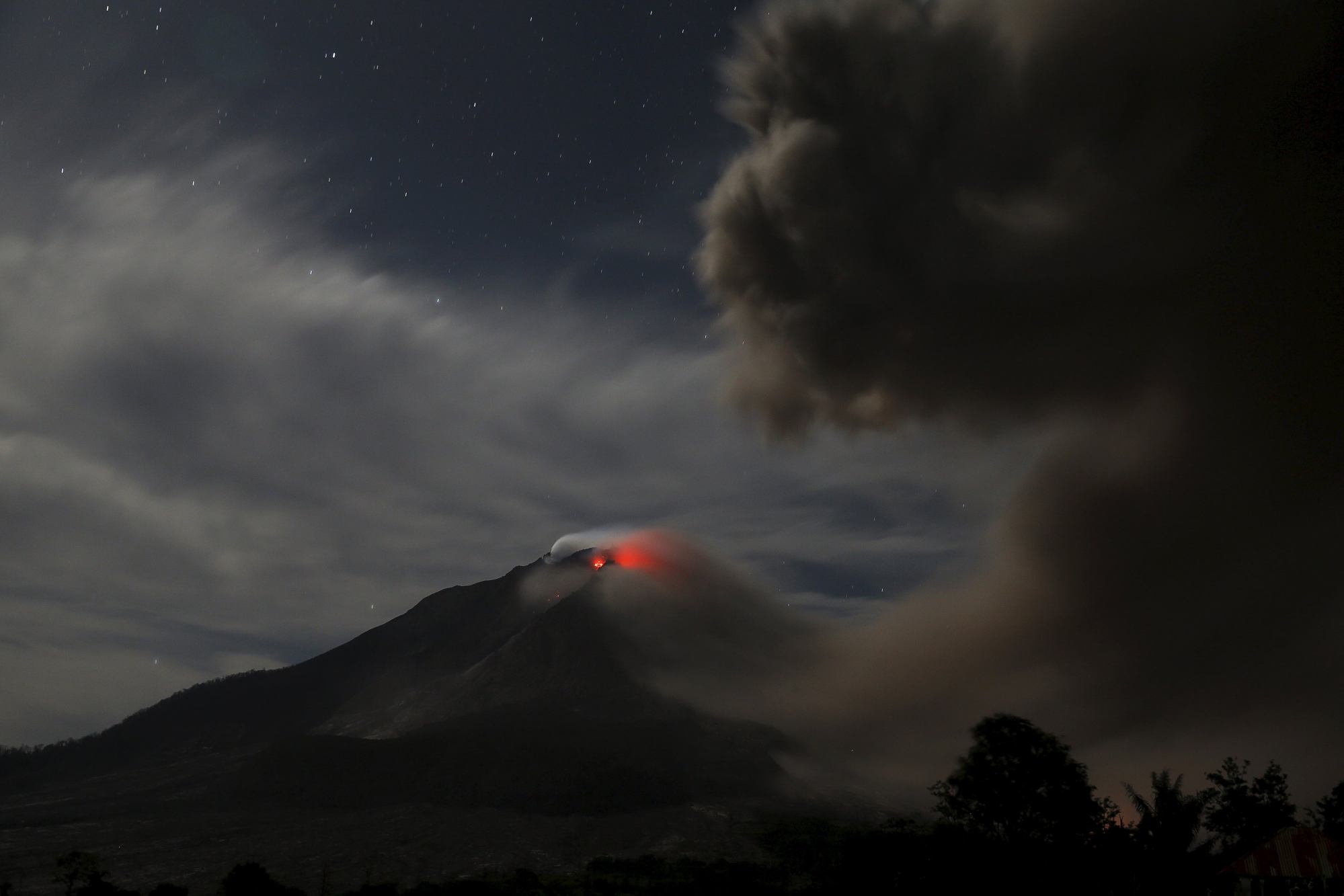
This sets an undesirable precedent as the primates associate humans with food, which can lead to aggressive behaviour. It is also possible for people to pass on illnesses such as colds, flu and even Covid-19, if they get too close.
Some conservationists believe the Sumatran orangutan could be the first great ape species to become extinct in the wild.
Sumatra endures more than its fair share of natural disasters. The island is part of the Pacific Ring of Fire and is prone to earthquakes and volcanic eruptions. An earthquake in 2022 left 19,221 people displaced. The island also suffers from flash floods and landslides – one severe deluge in January 2023 left 100,000 homeless.
Nor should we forget the deadliest tsunami in recorded history. Sumatra bore the brunt of the 2004 disaster that saw entire communities wiped out and 1.7 million people displaced.
It’s not only endangered animals that have lost their habitat.

Animal attacks
Much media attention focuses on the welfare and survival of endangered species such as Sumatran tigers. Less coverage is allocated to the risk the animals pose to the public.
Incidences of tigers mauling farmers are infrequent, but they do occur. There were five attacks in 2019, including two fatal incidents, and in 2022 a farmer died from injuries sustained after being savaged by a big cat.
A group of domestic tourists camping in the rainforest were also set upon, and one was rushed to hospital with deep lacerations after a tiger got into his tent.

